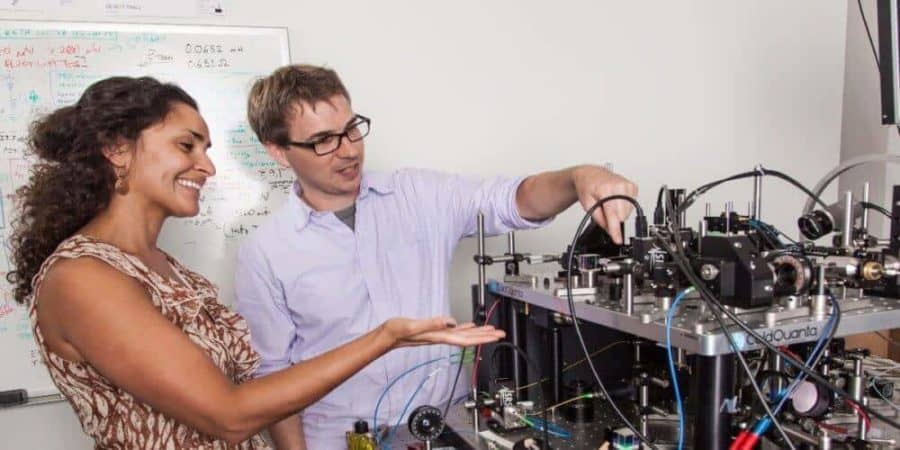The temperature of space is approximately -456 degrees Celsius. This translates to roughly 2.7 Kelvin. For perspective, the coldest temperature ever recorded on Earth was -138.5 degrees Celsius, or 178.45 Kelvin, in Antarctica. Absolute zero is reached at 0 Kelvin, and is thought to be impossible to reach in the physical world on its own.
This temperature of absolute zero is what fascinates Anita Sengupta, M.S. ’00 and Ph.D. ’05 in aerospace engineering and a USC Viterbi adjunct research associate professor of astronautical engineering.
For the past five years, she led NASA’s Cold Atom Laboratory (CAL). In 2018, the project will launch a cabinet-sized laboratory into the International Space Station (ISS) with the goal of cooling atoms of various elements, such as potassium and rubidium, down to absolute zero and studying how they interact in the microgravity of space.
The team hopes the results will have important applications for navigation; their lab will be producing an ordered state called the Bose Einstein condensate (BEC) that only occurs when particles are cooled to absolute zero. In addition, the technology the team created to create a BEC could be harnessed by future quantum sensors that are inherently hypersensitive to slight changes in gravitational, magnetic, and electric fields, which will help improve navigational precision during deep space travel and measurements of celestial bodies throughout the solar system. This hypersensitivity will be tested as the space station orbits around Earth, as the gravitational, magnetic, and electrical fields will change in relation to the station’s position over Earth’s surface.
Temperature is a matter of speed: the faster something moves, the warmer it is; so cooling particles down to absolute zero essentially means completely stopping their movement. To accomplish this, the laboratory will use concentrated lasers to slow atoms down and stop their movement completely. They will then observe how the particles interact.
“This is the first time an experiment like this will be conducted in Earth Orbit on the space station,” Sengupta said.
As this is a pioneering project, researchers have faced several difficulties. According to Sengupta, the biggest challenge was determining how to condense a laboratory that would normally occupy the size of a room down to the size of an ice chest.
Though terrestrial labs exist that can reach these cold temperatures, the experiments will be conducted in space to allow for a longer period of observation. The microgravity in space means that the ordered state, once reached, has a longer duration period– approximately five seconds– whereas on earth, the particles quickly fall out of suspension after less than a second due to Earth’s gravitational pull. The longer the window of time to study these particles, the more information the team can glean from their experiments.
Ultimately, the CAL project is about trying to understand the nature of matter. Though scientists currently understand how photons, electrons, and other small particles behave when part of a large system, it is not completely clear how single particles join together to create complex systems, essential to better understand how matter, and indeed the universe itself, came to exist.
The project currently has a three-year operational life, though there is a possibility of an extension. The instrument was designed to be upgradeable, so the crew on the ISS can go into it and do repairs and updates as need arises.
“CAL will be a pathfinder for many future space-based cold atom and laser cooling experiments and technology. It could open the door to a new quantum world,” Sengupta said.
And Sengupta is nothing if not ambitious. Her next journey has already begun: revolutionizing high-speed transportation as we know it. Sengupta recently joined Hyperloop One as a Senior Vice President leading the tech company’s systems engineering, regulatory certification, and product planning divisions.
“My NASA engineering and leadership roles on CAL and missions to Mars and deep space have given me the foundation to bring space-age technology down to Earth to make green transportation a reality,” Sengupta said.



“…cooled to absolute zero.” You cannot cool things to absolute zero. *Near* absolute zero, at best.
Misprint: -456 Celsius should be -456 Fahrenheit